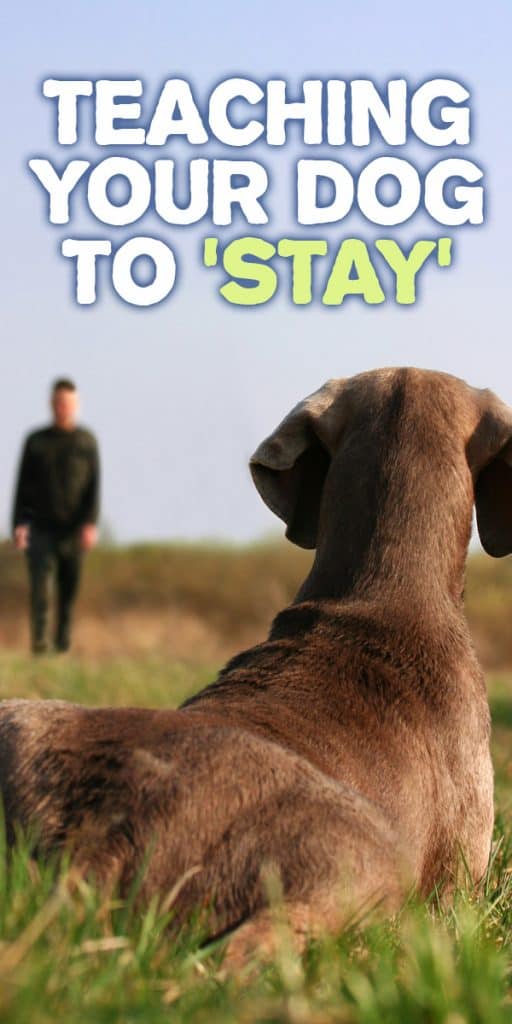
Arguably the most important cue any pet parent can teach their dog, the ‘stay’ cue is not only useful in the home setting, but can literally save his life.
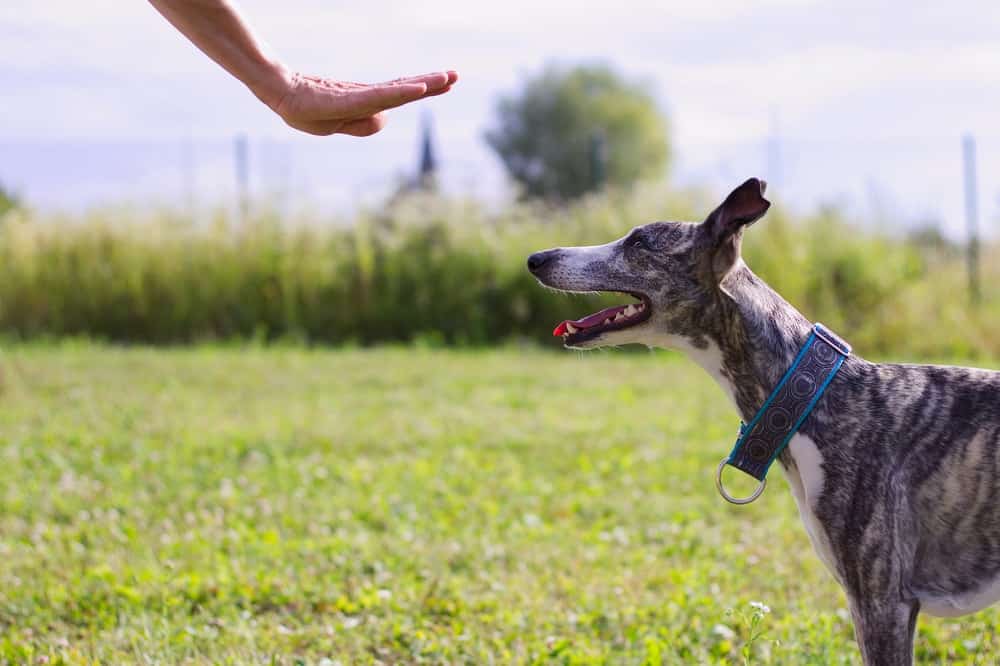
When you first bring a dog into your heart and home, it’s easy to get overwhelmed with the abundance of opinions on dog training and obedience. There are a number of different training methods, a vast number of tools that are designed to help train your dog, and lots of people willing to give you training advice (whether you ask for it or not!).
That said, training your dog basic obedience and appropriate behavior is a responsibility of every pet owner. Arguably the most important lesson to teach your dog is to ‘stay’.
Before you start any training, there are a few tools you’ll need for the job. First, be sure to always have tasty training treats at the ready. An easy way to do this is with a treat pouch clipped to your waist or belt loop. And, he should always wear a collar and ID tags and a leash.
Why is ‘Stay’ So Important?
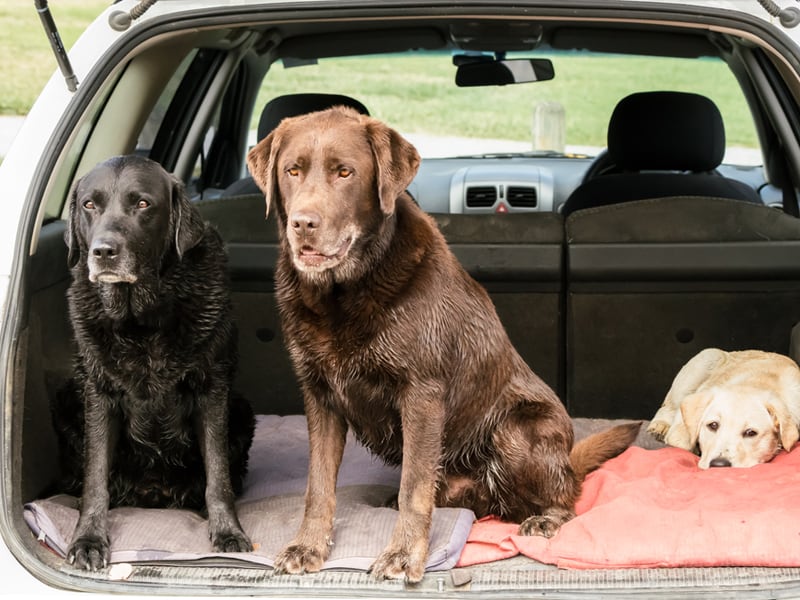

Most pet owners begin teaching their dog basic commands the moment they bring them home. The first “trick” almost all dogs learn is the ‘sit’ command, followed by ‘down’, and ‘come’. While these are all helpful cues to teach, the most important behavior of all, ‘stay’, is far too often ignored.
A dog who’s been taught a solid, reliable ‘stay’ is almost always safer than a dog that’s untrained. Imagine a visitor comes to your home. Without understanding ‘stay’, your dog could bolt out the front door. During walks, dog owners frequently encounter squirrels, rabbits, or other dogs. Without a reliable ‘stay’ cue, your dog may dart after an animal, unaware of oncoming traffic or other hazards.
Even inside the home, ‘stay’ is a useful cue. When you ask your dog to sit while greeting a guest, or to lay down while your family eats dinner, a dog that hasn’t been taught to stay, may bounce right back up from where he’s sitting or leave his bed to beg at the dinner table.
If Teaching ‘Stay’ is So Important, Why is it So Often Overlooked?
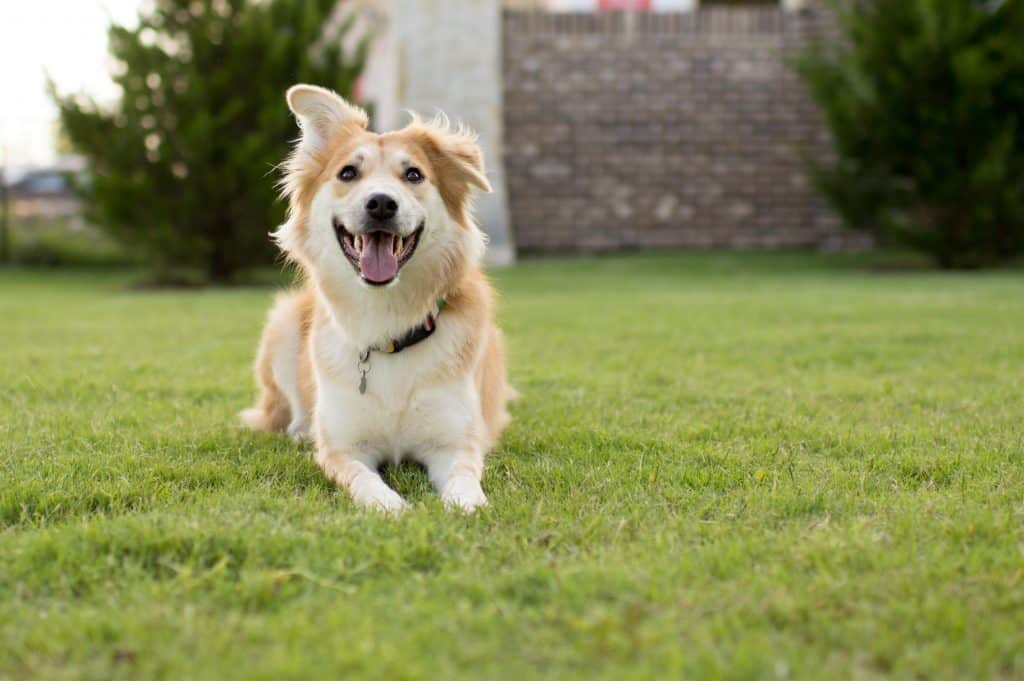

The answer is simple. Stay isn’t technically a command or cue, but rather, the absence of a command or cue. A dog should be taught to always stay in whatever cue he’s been given, like ‘sit’, ‘down’, or even ‘play dead’, until he’s been released.
Teaching a Dog to ‘Stay’
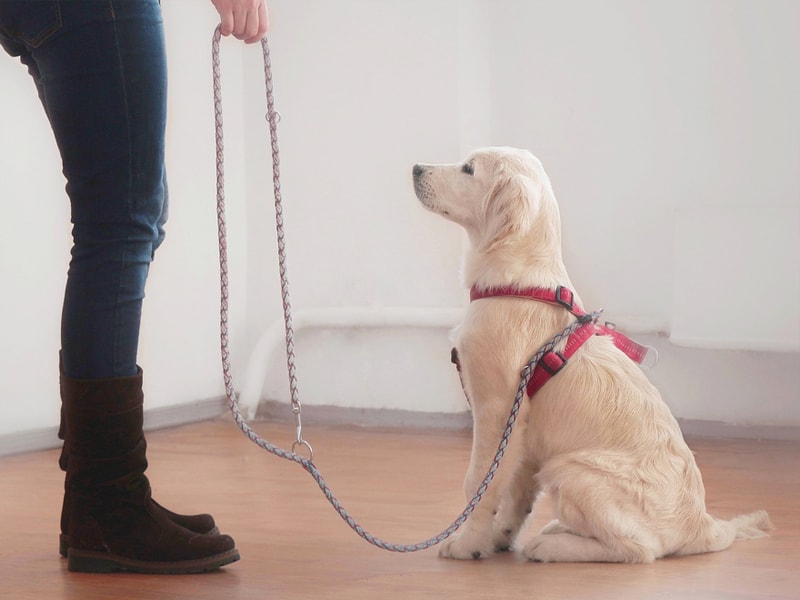

Training your dog to stay is not taught in the same way that other cues, commands, and tricks are taught. In fact, in many ways, it’s even simpler. Here’s how to do it:
- Give the dog a cue or command, like ‘sit’ or ‘down’. As long as the dog is in that position, he is technically “staying”, it’s not necessary to give a verbal command for your dog to ‘stay’.
- When the dog is in position, like sitting or staying as commanded, give verbal praise, like “good boy/girl”.
- Release the dog from the original cue with another cue, like “okay” or “free” to signal to them that they’re free to get up or move from their position.
- Reward the dog with praise, treats, or toys – whichever is most valuable to him. Only reward the dog if he waited until released from the original cue to move.
You see, it’s actually quite easy if done properly. However, many dog owners make simple mistakes that can set their dog up for failure when teaching a dog to ‘stay’.
Important Tips to Remember
When training a dog to ‘stay’, progress very, very slowly, both in terms of the distance you are from your dog, the duration of time he must stay in position, and the level of distractions around you during your training sessions.
Distance: In the beginning, start by standing directly in front of your dog. Ask him to sit or lay down, and give the release cue (“okay” or “free”) without moving away from your dog. Once he fully understands, begin to increase your distance from him. At first, you may only be able to move one foot a few inches backwards before your dog gets up or moves. If your dog gets up, you’ve moved too far, too quickly. Back up and repeat at the last successful distance.
Duration: Just as with distance, you’ll want to increase the duration of your dog’s initial ‘stays’ in very short increments. At first, give your dog his initial cue, then wait only a second or two before giving the release word and rewarding. Gradually increase the length of time your dog must stay put. For some dogs, this process can be relatively quick, while others may need to practice for several weeks before fully grasping the concept.
Distractions: Distractions involve any outside elements that may distract your dog from his cue. Inside the home, distractions can include other family members, other pets, a knock on the door, the mailman making a delivery, and more. Outside, distractions can include anything from an animal or car passing by, an interesting new smell, or a dog barking from down the street. It’s absolutely essential to practice having your dog ‘stay’ when distractions are present as you’ll most definitely be faced with them in real-life scenarios. Again, start small, inside the home, with few distractions and slowly incorporate them, continuing to reward your dog for staying in any given cue.
Because dogs don’t generalize well, it’ll be important to practice this, and other training cues and commands, in a variety of places, indoors and outdoors, under a variety of circumstances.
If, at any point during training, your dog is unsuccessful, simple go back to the most recent successful ‘stay’ and begin again, progressing more slowly as needed. Eventually, your dog will learn that when he’s given a cue, he must always remain in that position until released, regardless of whether he’s verbally told to ‘stay’.
Found this article helpful? Pin it!
